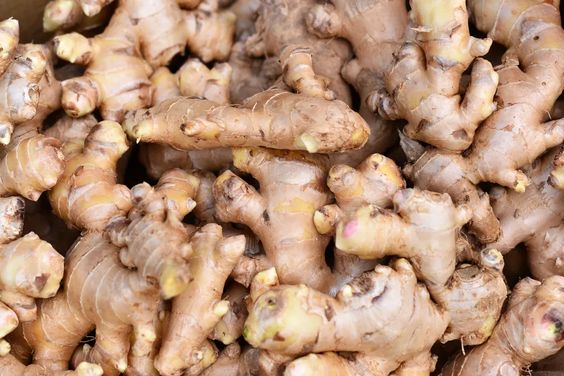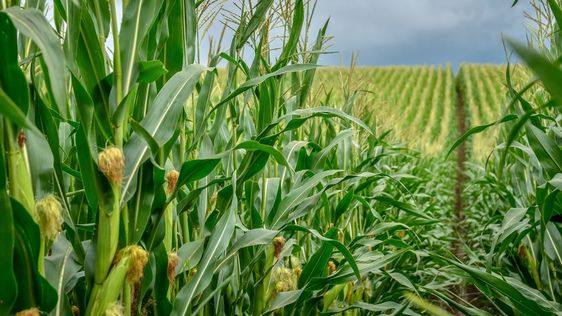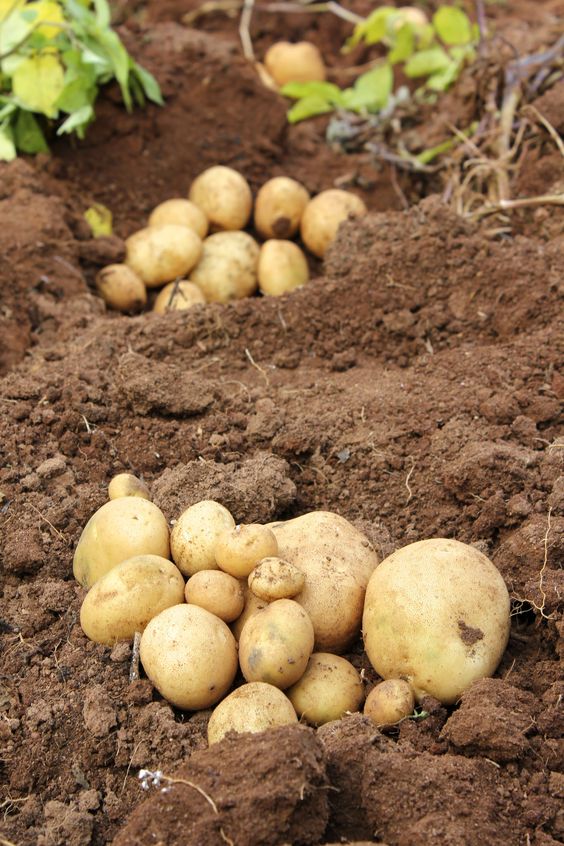Diseases Affecting Ginger Plants: Symptoms, Causes, and Solutions
Diseases Affecting Ginger Plants, a versatile spice and medicinal herb, is susceptible to various diseases that can significantly impact its yield and quality. Understanding these diseases and implementing effective management strategies is crucial for successful ginger cultivation.
Contents
Fungal Diseases
1. Rhizome Rot Rhizome rot is a serious fungal disease caused by pathogens such as Pythium and Phytophthora. It typically affects the underground rhizomes, leading to rotting and decay. Symptoms include yellowing leaves, wilting, and a foul odor.
Prevention and Control:
- Use well-draining soil to prevent waterlogging.
- Avoid planting ginger in areas with a history of rhizome rot.
- Rotate crops to break the disease cycle.
- Apply fungicides as recommended.
2. Fusarium Yellows Fusarium yellows is a fungal disease caused by Fusarium oxysporum f. sp. zingiberi. Infected plants exhibit yellowing leaves, stunting, and wilting. The rhizomes may also develop a brown discoloration.
Prevention and Control:
- Use disease-free planting material.
- Practice crop rotation to avoid reinfection.
- Avoid planting ginger in heavy, poorly drained soils.
- Consider using resistant ginger varieties.
3. Sheath Blight Sheath blight is a fungal disease caused by Rhizoctonia solani. It affects the leaves and sheaths, causing brown lesions and blighting. Infected plants may become stunted and yield less.
Prevention and Control:
- Maintain good field hygiene and remove infected plant debris.
- Avoid overhead irrigation to prevent excessive moisture.
- Apply fungicides as needed.
4. Dry Rot Dry rot is a fungal disease caused by Rhizopus stolonifer. It primarily affects the stored rhizomes, causing them to dry out and become moldy.
Prevention and Control:
- Properly cure and dry ginger rhizomes before storage.
- Store rhizomes in a cool, dry place.
- Avoid storing damaged or diseased rhizomes.

Bacterial Diseases
1. Bacterial Wilt Bacterial wilt is a serious bacterial disease caused by Ralstonia solanacearum. Infected plants exhibit yellowing leaves, wilting, and a slimy bacterial ooze from the base of the stem.
Prevention and Control:
- Use disease-free planting material.
- Practice crop rotation.
- Avoid planting ginger in heavy, poorly drained soils.
- Consider using resistant ginger varieties.
Viral Diseases
1. Ginger Mosaic Virus Ginger mosaic virus is a viral disease that causes yellowing, mottling, and stunting of the leaves. Infected plants may produce smaller and lower-quality rhizomes.
Prevention and Control:
- Use virus-free planting material.
- Destroy infected plants to prevent the spread of the virus.
- Practice good sanitation practices in the field.
Nematode Diseases
1. Root-Knot Nematodes Root-knot nematodes are tiny parasitic worms that infect the roots, causing galls and stunting. Infected plants may exhibit yellowing, wilting, and reduced growth.
Prevention and Control:
- Use nematode-free planting material.
- Practice crop rotation to break the nematode life cycle.
- Consider using resistant ginger varieties.
- Apply nematicides as recommended.

Positive and Negative Impacts of Ginger Consumption
Ginger, a versatile root with a pungent flavor and numerous health benefits, has been used for centuries in various culinary and medicinal applications. While ginger offers several positive impacts on health and well-being, it’s important to be aware of its potential negative effects.
Positive Impacts of Ginger Consumption
-
Digestive Health: Diseases Affecting Ginger Plants,Ginger is renowned for its ability to soothe digestive issues. It can help alleviate nausea, vomiting, and motion sickness. Gingerol, a bioactive compound found in ginger, has been shown to stimulate the secretion of digestive enzymes, aiding in digestion. Additionally, ginger can help reduce bloating and flatulence.
-
Pain Relief: Diseases Affecting Ginger Plants possesses anti-inflammatory properties that can help reduce pain and discomfort. It has been used to alleviate pain associated with arthritis, muscle soreness, and menstrual cramps. Some studies suggest that ginger may be as effective as over-the-counter pain medications for certain types of pain.
-
Antioxidant Properties: Diseases Affecting Ginger Plants is rich in antioxidants, which help protect cells from damage caused by free radicals. These antioxidants can contribute to a reduced risk of chronic diseases such as heart disease, cancer, and stroke.
-
Blood Sugar Control: Diseases Affecting Ginger Plants may help regulate blood sugar levels. Studies have shown that ginger can improve insulin sensitivity, allowing the body to utilize glucose more effectively. This can be beneficial for individuals with diabetes or prediabetes.
-
Heart Health: Diseases Affecting Ginger Plants has been linked to improved heart health. It may help lower cholesterol levels, reduce blood pressure, and improve blood circulation. Additionally, ginger’s antioxidant properties can protect the heart from damage.
-
Immune System Boost: Diseases Affecting Ginger Plants contains compounds that can help boost the immune system. These compounds may help fight off infections and improve overall health.
-
Weight Management: Diseases Affecting Ginger Plants may aid in weight management. Some studies suggest that ginger can increase metabolism and promote fat burning. Additionally, ginger’s digestive benefits can help reduce bloating and improve overall satiety.
-
Brain Health: Diseases Affecting Ginger Plants may have positive effects on brain health. It has been shown to improve cognitive function and reduce the risk of neurodegenerative diseases such as Alzheimer’s and Parkinson’s.
Negative Impacts of Ginger Consumption
While ginger is generally safe for most people, excessive consumption or interactions with certain medications can lead to negative effects.
-
Gastrointestinal Upset: Although ginger is often used to alleviate digestive issues, excessive consumption can sometimes cause gastrointestinal discomfort, such as heartburn, diarrhea, or stomach ulcers.
-
Blood Thinning: Ginger has blood-thinning properties. Individuals taking blood thinners or those with bleeding disorders should consult with a healthcare professional before consuming ginger.
-
Allergic Reactions: While rare, some individuals may be allergic to ginger. Symptoms of a ginger allergy can include hives, swelling, and difficulty breathing.
-
Interactions with Medications: Ginger may interact with certain medications, such as blood thinners, diabetes medications, and heart medications. It’s important to consult with a healthcare professional before consuming ginger if you are taking any medications.
-
Pregnancy and Breastfeeding: Pregnant and breastfeeding women should exercise caution when consuming ginger. Excessive ginger consumption during pregnancy has been associated with preterm labor. It’s best to consult with a healthcare professional for guidance.

Effective Management of Common Diseases Affecting Ginger Plants
Diseases Affecting Ginger Plants, a valuable spice and medicinal herb, is susceptible to various diseases that can significantly impact its yield and quality. Implementing effective management strategies is crucial for maintaining healthy and productive ginger crops. Here are some comprehensive approaches to handling common ginger diseases:
Prevention and Proactive Measures
- Disease-Free Planting Material: Diseases Affecting Ginger Plants,Use certified disease-free ginger rhizomes to minimize the introduction of pathogens into your field.
- Soil Preparation: Diseases Affecting Ginger Plants,Ensure proper soil drainage to prevent waterlogging, which can create favorable conditions for fungal diseases.
- Crop Rotation: Diseases Affecting Ginger Plants,Rotate ginger with non-host crops to break the disease cycle and reduce the buildup of pathogens.
- Sanitation: Remove and destroy infected plants and plant debris to prevent the spread of diseases.
- Variety Selection: Choose ginger varieties that are known to be resistant or tolerant to specific diseases.
- Integrated Pest Management (IPM): Employ an IPM approach that combines biological, cultural, and chemical control methods to minimize the use of pesticides.
Cultural Practices
- Proper Spacing: Plant ginger at the recommended spacing to allow for adequate air circulation and reduce the risk of disease transmission.
- Irrigation: Avoid overhead irrigation, as excessive moisture can promote fungal diseases. Instead, use drip irrigation or furrow irrigation to deliver water directly to the root zone.
- Fertilization: Provide balanced fertilization to ensure healthy plant growth and reduce susceptibility to diseases.
- Mulching: Apply mulch around the base of the plants to help retain moisture, suppress weeds, and reduce the risk of soil-borne diseases.
Chemical Control
- Fungicides: Diseases Affecting Ginger Plants,Use fungicides as a last resort when cultural and biological control methods are insufficient. Choose fungicides that are specifically labeled for use on ginger and follow the recommended application rates and timing.
- Nematicides: Diseases Affecting Ginger Plants,Apply nematicides to control root-knot nematodes and other parasitic nematodes. However, use nematicides with caution and consider the environmental impact.
Biological Control
- Beneficial Microorganisms: Diseases Affecting Ginger Plants,Introduce beneficial microorganisms, such as mycorrhizal fungi or Trichoderma spp., to the soil. These microorganisms can help suppress plant pathogens and promote healthy plant growth.
- Biocontrol Agents: Use biological control agents, such as nematodes or insects that prey on plant pests, to reduce the population of harmful organisms.
Monitoring and Early Detection
- Regular Inspection: Inspect your ginger plants regularly for signs of diseases, pests, or nutrient deficiencies.
- Early Detection: Detect diseases at an early stage to implement control measures before they spread and cause significant damage.
- Disease Diagnosis: Consult with a plant pathologist or agricultural extension service for accurate disease diagnosis and recommendations for control.
By combining these strategies, you can effectively manage common ginger diseases and maintain a healthy and productive ginger crop. Remember to tailor your management practices to the specific conditions of your farm and the prevailing disease pressures in your region.




